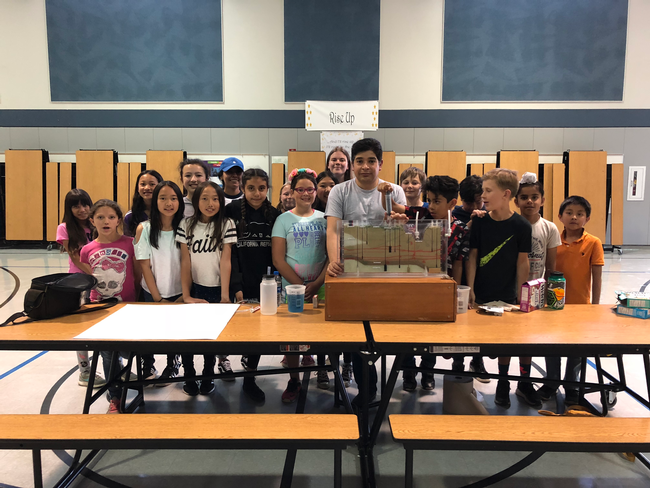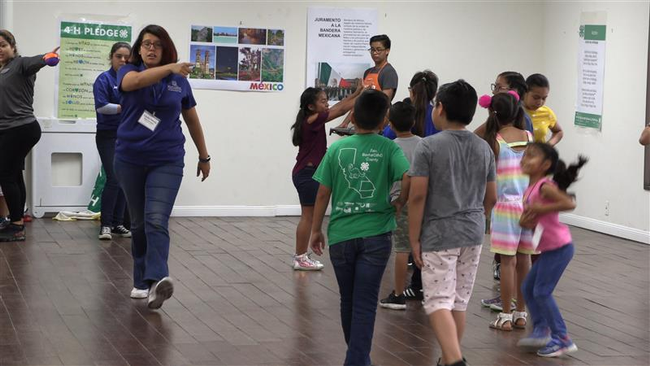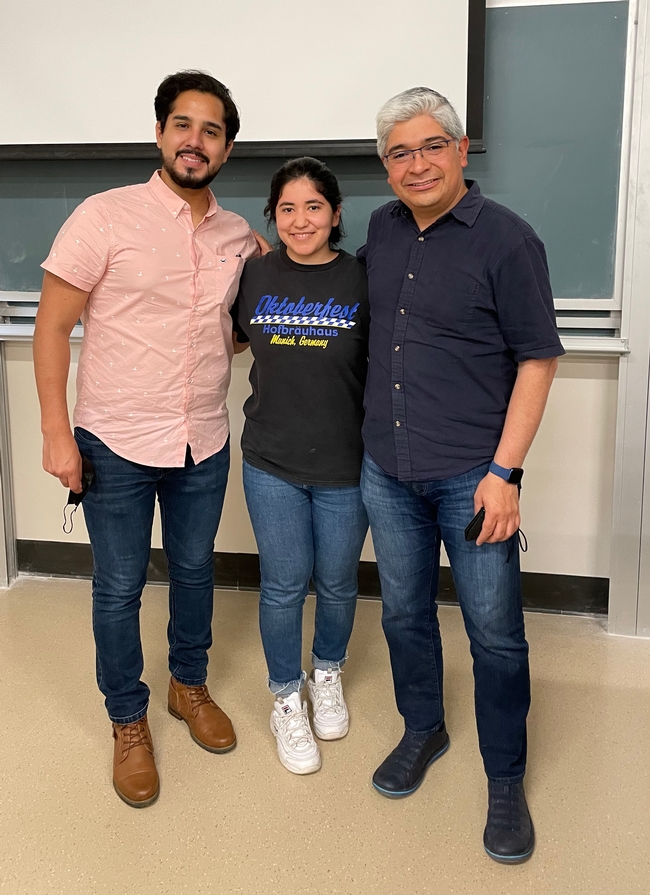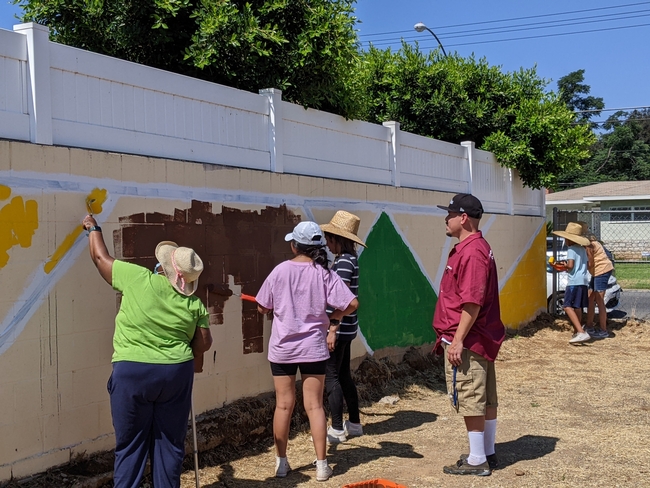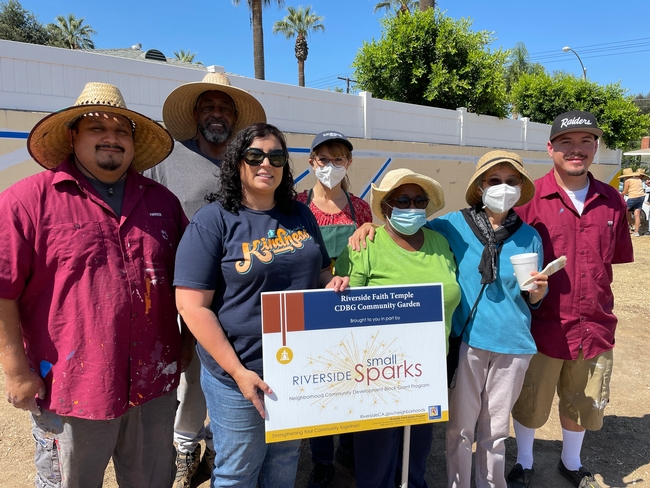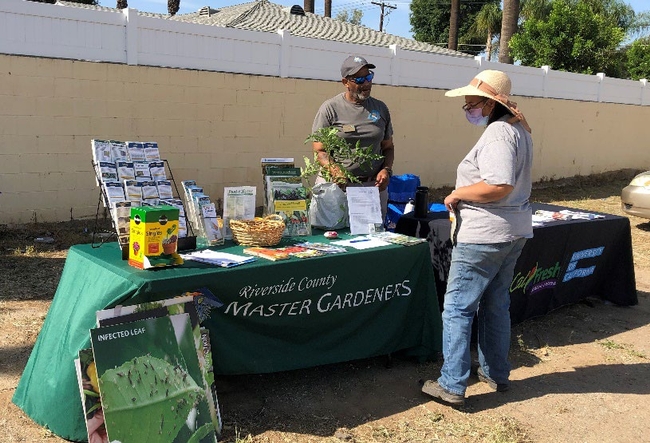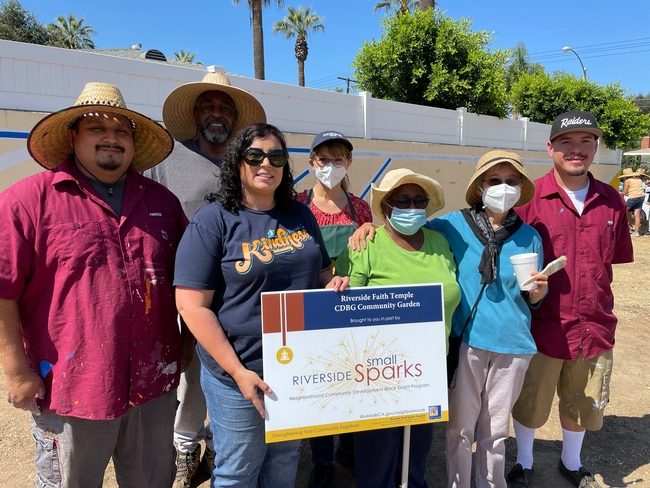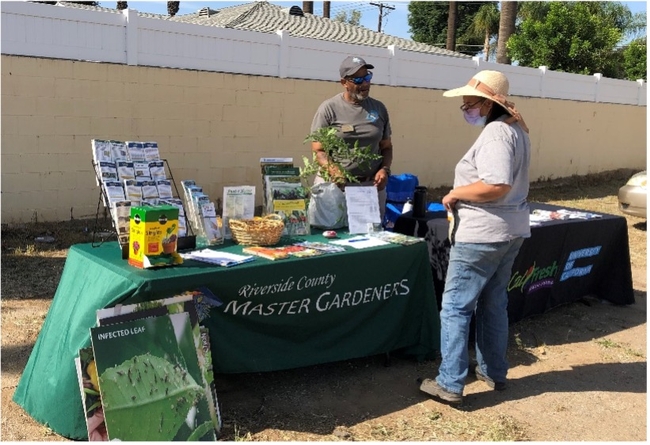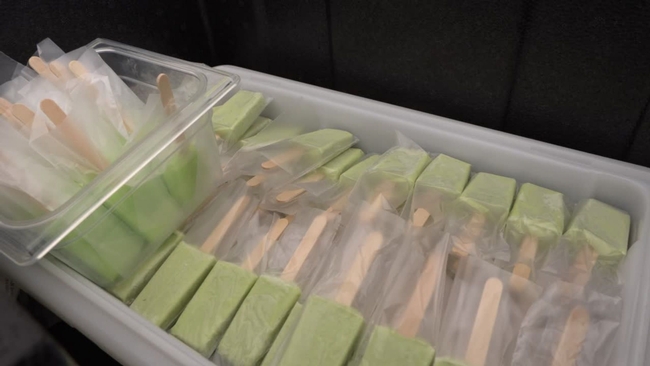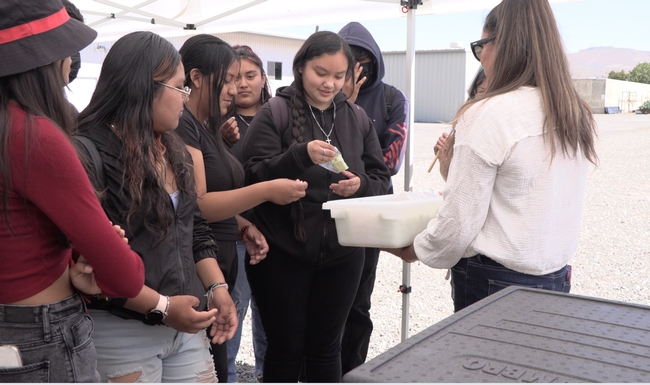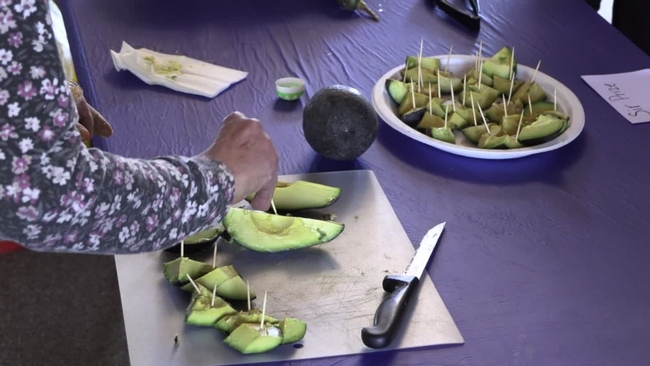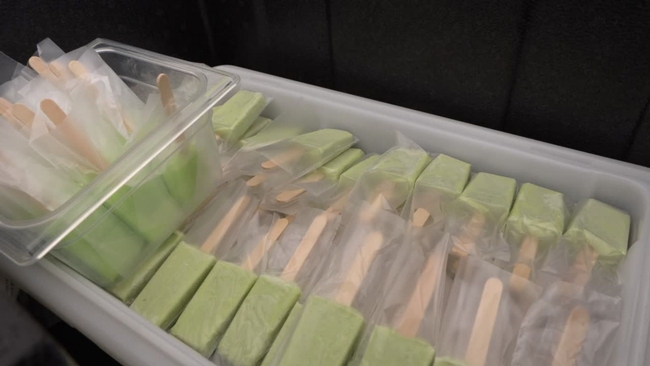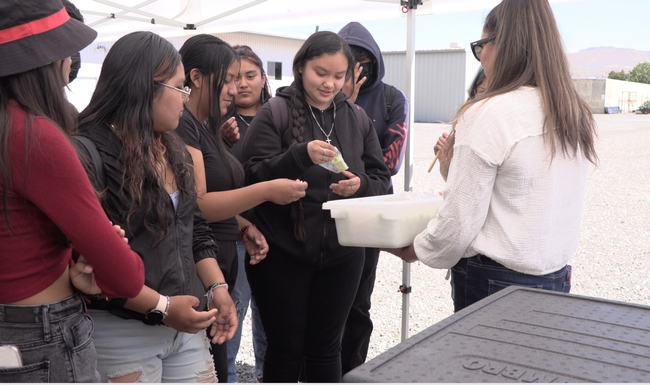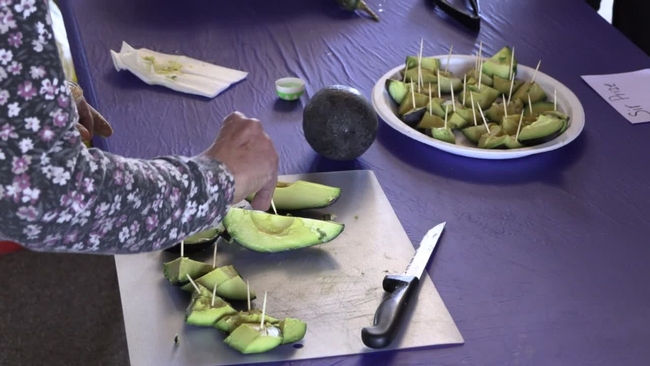- Author: Ricardo A. Vela
Jesús Peña recently earned his doctoral degree in microbiology from the University of California, Riverside. His motivation to study a career in science was decided from a very young age thanks to talks and teachings from his parents.
"My family played an important role in my decision to pursue science. My dad grew up in Mexico and wanted to be a science teacher, but he didn't have access to those opportunities," says Peña. "He and my mother encouraged me to be curious about the world and the environment and share that knowledge with others in my community," said the young Latino scientist.
Although the participation of Latinos in scientific careers is increasing every day, this group continues to be underrepresented in the workplace. A survey conducted by the Pew Research Center indicates that Latinos need more representation in science, technology, engineering, and math (STEM) careers and fields to attract more young Hispanics to those careers.
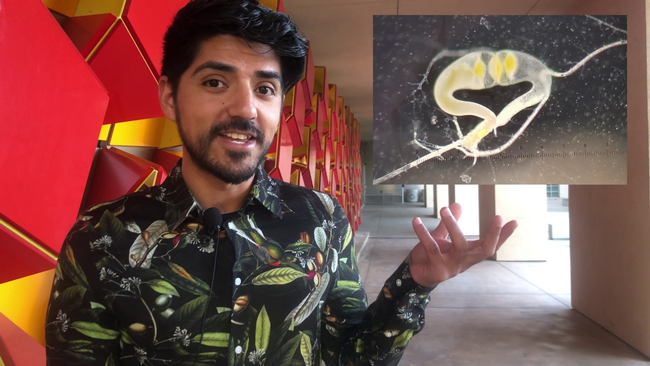
"Latinos need to join the scientific workforce because we're among the many groups contributing to science through taxation. We must be represented among the workgroups, that is, the scientists." Peña said.
Latinos are one of the fastest-growing ethnic groups in the nation. In California, 39.4% of the population is Hispanic, and nationally, Latinos total 62.1 million in 2020, representing 19% of all Americans. That is, it is the second-largest ethnic group in the country, according to the United States Census Bureau.
Hence, increasing Latinos in the ranks of the sciences is a huge challenge that is being addressed by several scientists in University of California Agriculture and Natural Resources, UC ANR, from different perspectives.
Jairo Díaz, director of the UCANR Desert Research and Extension Center, oversees a community program that invites groups of Latino grade school to college-age students to participate in activities that apply science in agriculture at Desert REC, where several experiments are underway to produce food using less water, among other studies.

Carmen Gispert, an entomologist at Extension Cooperatives in Riverside, Imperial, and San Diego counties, puts her interest in promoting scientific careers, especially among women.
"I have served as a mentor to high school students and encouraged them to pursue a career in science. The parents of many of these students were farmworkers. I have been particularly interested in motivating young women, telling them about my personal experience in a male-dominated career in science," Gispert said.
Liliana Vega, California 4-H youth development advisor for UC Cooperative Extension in Santa Barbara County, has launched a program called "Chispa" or "Career Spark," in which Hispanic professionals discuss with students their paths, barriers they faced when choosing to go to college, and careers in STEM.
Claudia Díaz-Carrasco, UC Cooperative Extension youth development advisor, is part of the 4-H Latino Initiative and has received numerous awards for her commitment to promoting scientific careers among Latinos. She is optimistic about the achievements made so far.
"I partnered with the San Bernardino Superintendent of Schools through his expanded learning division. We have been collaborating since 2019 to create a STEM center for after-school programs in the region. This team project has inspired the next generation of scientists and engineers in Southern California," Diaz-Carrasco said.
In 2015, UC ANR hosted the first annual conference "Juntos," which is part of UC ANR's Latino Initiative to increase the number of Latinos in higher education and science. At the conference, young Latino students from all over California live together for several days on a University Campus. They experience firsthand what it means to study at a university, in addition to hearing talks from Latino professionals from various disciplines to encourage them to continue their university studies and enter a career in STEM.
A few years ago, the 4-H Water Wizards program was launched, sponsored by the U.S. Department of Agriculture or USDA, which aims to ensure that low-income Latino and African-American students have access to practical science from an early age through activities they develop with UC ANR Latino scientists who speak in their language.
The Pew Research Center reports young Hispanics would be at least slightly more likely to earn college degrees in STEM if they had a high school STEM teacher who was Latino.
Samuel Sandoval Solís, associate professor at the University of California, Davis and UC Cooperative Extension water resources specialist, points out that although progress has been made, hiring Latino scientists is slow in educational institutions.
"In the 10 years I've been teaching at UC Davis, students often mention that I'm their first science teacher who is Hispanic, so they don't feel represented on the faculty. While these may be small efforts, I think slowly, but surely the youth of our Hispanic community recognizes that it's possible to be a scientist; that's great for our young people," Sandoval Solis said.
- Author: Ricardo A. Vela
La madre naturaleza hizo su parte al ofrecer un clima espectacular de fin de semana como si hubiese estado ansiosa de participar en los eventos de jardines comunitarios el sábado en Riverside. Los miembros de la comunidad, entre los cuales se encontraba la regidora municipal Clarissa Cervantes, ellos pintaron la primera capa de colorido mural en una pared que bordea el jardín comestible en una comunidad del este de Riverside.
A nombre de la ciudad de Riverside, la administradora interina de proyectos de asuntos comunitarios de la ciudad de Riverside entregó una subvención del programa de embellecimiento municipal “Small Sparks Neighborhood” por $5,000 dólares para activar el desarrollo del jardín comunitario que está ubicado en la esquina de las calles Sedgwick y Pensilvania. En el jardín de 1.5 acres se cultivan alimentos saludables para los residentes de este vecindario en su mayoría latinos y afroamericanos.
Los participantes comenzaron a diseñar el mural del jardín comunitario, que promueve la salud y la vida, bajo la supervisión del artista local Ron De Cid, conocido en el sur de California por el color y la fuerza de sus murales. El mural consiste en una representación de frutas y verduras frescas mezcladas con imágenes vívidas de personas corriendo, bailando, paseando en bicicleta, y participando en otras actividades físicas.
El jardín ha crecido gracias a la exitosa asociación entre la iglesia Riverside Faith Temple y su líder, el pastor Duane Sims, La Extensión Cooperativa de la UC y los programas Viviendo Saludable de CalFresh y Maestro Jardinero UC.
Sims, voluntarios y educadores de UC Cooperative Extension en Riverside han trabajado en este proyecto desde 2019, cuando Sims comenzó a limpiar y nivelar el terreno para dar paso a la construcción de ocho jardineras elevadas. En la primavera de 2021 se plantaron frutas y hortalizas.
La siguiente fase es colocar adoquines alrededor de las cajas de cultivo. Actualmente, se buscan recursos para instalar un sistema de riego para el huerto comunitario. La ciudad de Riverside considera financiar el proyecto.
Los residentes de esa comunidad ya gozan de beneficios de los esfuerzos de la Ciudad de Riverside, Faith Temple, UC Master Gardeners, CalFresh Living Healthy, UCCE Riverside y las organizaciones comunitarias. El área luce renovada, más segura y productiva para los residentes.
El mural será develado el 30 de junio a las 6 PM y se invita al público a que visite el jardín que se encuentra ubicado en la intersección de las avenidas Sedgwick y Pennsylvania en la ciudad de Riverside.
- Author: Ricardo A. Vela
Mother Nature did her part by offering spectacular weekend weather as if she wanted to participate in the community garden events on Saturday in Riverside. Community members painted the first layer of a colorful mural on a wall bordering the edible garden in an Eastside neighborhood. City Council Member Clarissa Cervantes was one of them.
On behalf of the City of Riverside Acting Project Manager -Neighborhood Engagement Aggie Padilla presented a Small Sparks neighborhood grant to invigorate the community garden at the corner of Sedgwick and Pennsylvania avenues. The 1.5-acre garden is growing healthy food for the residents of this neighborhood of mostly Latinos and African Americans.
Participants began painting the community garden mural, which promotes healthy living, under the supervision of local artist Ron De Cid, known in Southern California for the color and strength of his murals. The mural depicts fresh fruits and vegetables mixed with vivid images of people running, dancing, bicycling, gardening, and engaging in other forms of exercise
The garden has grown thanks to the strong partnership between Riverside Faith Temple and its leader Pastor Duane Sims, and UC Cooperative Extension programs CalFresh Healthy Living and UC Master Gardener.
Sims, volunteers, and UC Cooperative Extension in Riverside have worked on this project since 2019 when Sims began cleaning and leveling the land to make way for the construction of eight elevated planters. Fruits and vegetables were planted in the spring of 2021.
The next phase is to place pavers around the planter boxes. Currently, resources are being sought to install an irrigation system for the community garden. The City of Riverside is considering financing the project.
The benefits of the efforts of the City of Riverside, Faith Temple, UC Master Gardeners, CalFresh Living Healthy, UCCE Riverside, and community organizations are already visible, beautifying the community and making the area more productive for residents.
After the painting and paving are completed, a celebration event is planned at the garden at 6 p.m. on June 30.
UC ANR makes a difference in the lives of Californians by supporting and improving the health of our state's communities, environment, food systems, workforce, and economy.
- Author: Norma De la Vega
En un día caluroso y tras una larga caminata por los cultivos de cítricos, cebolla, papa y aguacate y más vegetales, decenas de estudiantes se detenían en el refugio de sombra a tomar descanso y a degustar algo que les sorprendió.
Una paleta helada de aguacate, sin preservativos y ni azucares agregados elaborada artesanalmente en una nevería localizada en Anaheim, California. “Vengan y prueben son paletitas de aguacate que hicimos con los aguacates que nos donó UC South Coast Research and Extension Center de las huertas que hay aquí”, dijo Jennifer Clausen-Quiroz de Tocumbo Ice Cream alentando a los adolescentes a probar las paletitas.
¿Paletas de aguacate con sabor de guacamole? fue lo primero que le vino en mente a Jeffrey Magill, estudiante de la preparatoria Huntington Beach High School.
“Al enterarme que puedes hacer helado con aguacate, pensé supongo que dijiste guacamole, pero estaba muy equivocado. Ni siquiera me gustan los aguacates y me encantó esta paleta de aguacate fue increíble”, dijo Magill quien fue parte de 100 estudiantes de varias escuelas locales que visitaron esas instalaciones como parte de un viaje educativo y la degustación de las paletas fue una de varias actividades que realizaron a lo largo del día. No es actividad nueva en las instalaciones de UCANR en donde es común organizar eventos para que la comunidad pruebe nuevas variedades de frutas y verduras que producen los expertos para mejorar el sabor, proporcionar variedad o simplemente producir plantas más resistentes a un medioambiente que presenta, sequía, plagas y más.
Por ejemplo, en el caso del aguacate UCANR ha lanzado cerca de 9 o 10 diferentes variedades de aguacate desde 1992 ya patentadas, pero hay 230 variedades más que se estudian en ese centro de investigación. No todas son UC variedades, hay de todo tipo de aguacate y de países centroamericanos e incluso variedades silvestres y cada uno es diferente. Algunos aguacates tienen cáscara más gruesa, o más obscura, algunos son más redondos, otros son pequeñitos. Otros son más dulces o cremositos.
Hay de todo y en ese centro se siguen coleccionando diferentes tipos para investigar y producir nuevos sabores para lanzarlos al mercado a probar suerte entre los exigentes paladares.
Y es que el aguacate, sigue siendo una fruta relativamente nueva en este país. Hace solo unas décadas se le consideraba un alimento étnico, debido a que lo consumían más los mexicanos, pero eso ha cambiado y la demanda crece rápidamente por todo el país.
Para Magill probar la paleta de aguacate fue una experiencia que le enseñó a no temer a probar alimentos nuevos. “Esto me dio una razón para ir a buscar más las frutas que detesto porque sabes que hay un millón de formas en que puedes tener las cosas” dijo Jeffrey.
Cosechar, probar nuevos alimentos, mirar germinar las plantas, platicar con voluntarios y expertos sobre agricultura fue parte de la experiencia completa que los estudiantes tuvieron gracias al programa GROW que se ejecuta en colaboración con el Buró de Agricultores del Condado de Orange, organización que además ayuda con financiamiento para las actividades educativas. El propósito es mostrar de dónde vienen los alimentos y las amplias oportunidades profesionales que hay en agricultura.
“Nuestro objetivo es atraerlos (estudiantes) para que piensen que la agricultura es definitivamente una carrera que me interesa y vean que hay una gran cantidad de ciencia detrás de lo que se hace para cultivar nuestros alimentos”, dijo Darren Haver director UC South Coast Research and Extension Center. Se trata de una colaboración muy exitosa entre ambas organizaciones que data desde el 2000.
El centro de investigación está enclavado en terreno de 200 acres en donde se ejecutan más de 35 diferentes investigaciones para la producción de alimentos como café y nuevas variedades de aguacate y otros alimentos. También se estudian opciones biológicas para proteger los árboles de cítricos de una plaga que ha devastado a esa industria en Florida.
Son estudios que toman muchos años de observación y paciencia, pero los resultados son tan exitosos como en el caso del aguacate. Una fruta tropical que hace tan solo unas décadas era desconocida para los estadounidenses pero que actualmente se produce localmente.
“En California producimos el 90% del mercado de los Estados Unidos, pero no es suficiente para todo el país, tal vez no sea suficiente ni para California en sí,” señaló Eric Focht experto en cultivo y mejoramiento del aguacate al referirse a la creciente demanda de esa fruta cremosita.
El experto explicó que hay muchas texturas y también variedades como el aguacate Hass que es un poco firme y sería mejor para rebanar porque mantienen su forma más firme versus el aguacate Fuerte que es un poco cremoso o tal vez más para el guacamole.
Paletas heladas de fruta, un regalo de los sabores de México.
Guayaba, guanábana, mango, maracuyá, limón, chamoy con su sabor picosito, mamey, pistache y más son algunas de las paletas de Tocumbo Ice Cream que son toda una aventura muy mexicana de sabores.
En Tocumbo Ice Cream su secreto es hacer paletas de todo aquello que venga del campo y por supuesto que el aguacate no se iba escapar, aunque suene raro el sabor del aguacate es tan delicioso en paleta como en guacamole.
!Increíbles, definitivamente nada de lo que puedes esperar!, estaban muy cremosas y endulzadas naturalmente y no tenían azúcar agregada, todos quedamos gratamente sorprendidos”, dijo María Georgakopoulos, maestra en Huntington Beach High School.
En México las paletas heladas de fruta son tan populares como las palomitas en el cine en los Estados Unidos y en este país también le encantan a chicos y grandes.
Las paletas de fruta es un nicho empresarial que nació en Michoacán, tiene casi 100 años y se ha convertido en un producto de exportación muy exitoso en los Estados Unidos.
“Las paletas de aguacate están bien buenas” dijo Diana Chavez, estudiante de preparatoria. “Y hemos aprendido mucho sobre los diferentes tipos de aguacates”.
- Author: Norma De la Vega
- Adapted to English by: Ricardo A. Vela
On a hot day and after a long walk-through of farm fields full of citrus, onion, potato, avocado, and other fruits and vegetables, dozens of students stopped at a shade shelter to take a break and taste something that surprised them.
An avocado ice popsicle.
Yes, you read correctly, an avocado popsicle, without added sugars, made by hand in a nevería Spanish name for ice cream parlor located in Anaheim, California.
"Come and try them; we made them with the avocados donated by UC ANR (Agriculture and Natural Resources) South Coast Research and Extension Center," said Jennifer Clausen-Quiroz of Tocumbo Ice Cream, encouraging teens to try the popsicles.
“Avocado popsicles? They must taste like guacamole” was the first thing that came to mind for Jeffrey Magill, a Huntington Beach High School student.
"Upon learning that you can make ice cream with avocado, I thought you said guacamole, but I was wrong,” said Magill. “I don't even like avocados and love them. The avocado popsicle was amazing.”
Magill was one of about 100 students from several local schools who visited the UC ANR center as part of an educational trip through its GROW program. Tasting the popsicles was one of several activities they did throughout the day.
At South Coast REC, it is common to organize events for the community to try new varieties of fruits and vegetables that experts produce to improve taste, provide variety or simply grow plants more resistant to a challenging environment, drought, pests, etc.
For example, in the case of avocado, UC ANR has played a role in patenting about 9 or 10 different varieties of avocado since 1992.
At the REC, researchers have studied 230 more types of avocados (not all of which are UC varieties). Some come from Central American countries, and there are even wild varieties. Each one is different from the other. Some avocados have thicker or darker shells. Some are rounder; others are tiny. Others are sweeter or creamier.
All those different types are collected and studied to produce new flavors that might be introduced to the market for the judgment of the public's discriminating palates.
An education in food
The avocado is still a relatively new fruit in this country. It was considered an “ethnic food” only a few decades ago because it was consumed more by people with Mexican heritage. But that has changed, and demand continues to snowball throughout the country.
For Magill, trying the avocado popsicle was an experience that taught him not to be afraid to try new foods. "This gave me a reason to go and look for fruits that I dislike because you know there are a million ways you can have things," the student said.
Harvesting, tasting new foods, watching plants germinate, and talking to volunteers and experts about agriculture was part of the complete experience that the students had. The GROW program runs in collaboration with the Orange County Farmers Bureau, an organization that also helps fund educational activities. The purpose is to show where food comes from and the ample career opportunities in agriculture.
"Our goal is to attract them (students) to think that agriculture is definitely a career that interests me and see that there is a lot of science behind what is done to grow our food," said Darren Haver, director of UC South Coast REC, which has successfully collaborated with OCFB since the early 2000s.
The research center is nestled on 200 acres, where currently more than 35 different studies are being conducted to produce foods such as coffee and new varieties of avocado and other foods.
"In California, we produce 90% of the U.S. market (of avocados), but it's not enough for the whole country, maybe it's not enough for California itself," said Eric Focht, a UC Riverside expert in avocado cultivation and improvement, referring to the growing demand for this creamy fruit.
Focht explained that avocados have many textures and varieties, such as the Hass avocado, which is a bit firm and would be better for slicing. And then there is the Fuerte avocado, which is creamy and more suitable for making guacamole.
Fruit ice pops, a gift of the flavors of Mexico.
Guava, soursop, mango, passion fruit, lemon, chamoy with its picosito flavor, mamey, pistachio, and more are some of the popsicles of Tocumbo Ice Cream. They reflect the adventure of flavors familiar in Mexican culture.
A niche product born in Michoacán, fruit popsicles are over 100 years old and have become a very successful export product in the U.S.
Tocumbo Ice Cream's pledge is to make popsicles from everything that comes from the field, and, of course, the avocado in Southern California has center stage. The flavor of the avocado is as delicious in ice cream or popsicles as it is in guacamole.
“Amazing, definitely nothing you can expect,” said Maria Georgakopoulos, a Huntington Beach High School teacher. “They were very creamy and sweetened naturally and had no added sugar. We were all pleasantly surprised."
At the end of the GROW program and tour, Diana Chavez, one of the high school students, summed up what the students experienced at UC South Coast REC.
"The avocado popsicles are very good," she said. "And we've learned a lot about the different types of avocados."
*Adapted to English by Ricardo Vela from the Spanish blog ¿Paletas heladas de guacamole?

